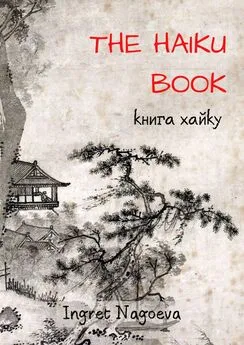Daniel Ingram - Mastering the Core Teachings of Buddha - An Unusually Hardcore Dharma Book
- Название:Mastering the Core Teachings of Buddha - An Unusually Hardcore Dharma Book
- Автор:
- Жанр:
- Издательство:Aeon Books
- Год:2009
- ISBN:9781904658405
- Рейтинг:
- Избранное:Добавить в избранное
-
Отзывы:
-
Ваша оценка:
Daniel Ingram - Mastering the Core Teachings of Buddha - An Unusually Hardcore Dharma Book краткое содержание
Mastering the Core Teachings of Buddha - An Unusually Hardcore Dharma Book - читать онлайн бесплатно полную версию (весь текст целиком)
Интервал:
Закладка:
Thus, the maps at their best tell the meditator in clear and systematic ways exactly what to do, what to look for, why, and exactly 233
How the Maps Help
how not to screw up at each stage. They are no substitute for clear practice and investigation of the sensations that make up one’s experience, and they are poor aids to those who refuse to heed them and follow their advice. As I continue to mention, they can also be used as a basis for useless and even harmful competition between gung ho meditators with insecurity issues. It can and has been argued convincingly that one certainly doesn’t need to know these maps at all so long as one practices well. Despite the dangers of competition and over-intellectualization, the maps still have tremendous value when used as they were meant to be.
One very valid criticism of the maps, as I mentioned before, is that people are often very susceptible to suggestion, often called “scripting.”
Describing these stages can cause people to have something that resembles these experiences just because they have been told that they are expected. The part of the maps that deals with emotional side effects is notorious for causing this particular kind of mimicry. For example, it is basically impossible to sort out what is just fear and what is insight stage 6 (Fear) based upon the presence of fear alone. The aspect of the maps that deals with unusual raptures (both physical and mental) is less suggestible, and is a more reliable indicator of the stage of practice.
However, the fundamental increases and shifts in perceptual
thresholds are extremely hard to fake, particularly if you have access to a map that goes into the extensive details presented here. Shifts in perceptual thresholds are the most reliable markers on the path of insight, the Gold Standard by which these stages are defined. For example, if you recently saw very fine vibrations that changed frequency with the breath, then had a big zap-through, spaced out for a while, and now feel paranoid with some steady 5-7 Hz stuff that quickly leads to chaotic, edgy vibrations with complex harmonics, that’s very likely the insight stage Fear.
Thus, increasing one’s perceptual thresholds in terms of speed, consistency, and inclusiveness should always be the focus of one’s insight practices. Skilled teachers who use and are very good with these maps will take into account all three, i.e. emotions, raptures and perceptual abilities, along with the pattern of these that has unfolded previously, and use these to come up with an educated guess as to what 234
How the Maps Help
is going on with a student. With years of experience, we may eventually get good at doing this for ourselves. I have found that my guesses about my own practice are usually more accurate after I have had a year or two to reflect on what has occurred.
The best, most consistent practice I ever did was during a two-week Mahasi Sayadaw-style retreat in Malaysia. This was my third retreat ever, and I knew nothing whatsoever of the maps of the progress of insight, very little theory, and had done almost no reading of the old texts. I was simply doing noting practice. I had been told by a friend that if I noted quickly and accurately all day long from the time I got up until the time I went to sleep without breaks then good things would happen. Well, from my point of view, all sorts of strange and largely irritating things happened. However, I just kept noting quickly all day long regardless.
Things were getting pretty wild, then things calmed down a bit, and finally I hit a wall. I could barely practice at all. I would sit down and try to note and be walking away from the cushion within a minute and before I realized what was happening. My mind was so tight, irritated and buzzy that I felt I would soon explode. It was immensely frustrating.
That night the abbot played a scratchy old tape of a Burmese monk with a thick accent describing the stages of insight. It blew my mind, as he described exactly what I had gone through in the previous 13 days. I could clearly see how the stages he was describing had unfolded, exactly where I was and what I had to do. I was also astounded that the path could be so reproducible and straightforward, that I could just follow moronically simple instructions and have it all happen. Those who want to get lost in the reaction, “No, it isn’t so simple. Awakening is a great and intractable mystery! You are lying! It mustn’t be so!” should take a few moments to seriously question exactly how this disempowering and inaccurate view helps them feel good about themselves. They should then take a few moments to find another, more empowering view that helps them feel good about themselves, step up to the plate, and hit a home run.
With a very high level of faith in the technique and despite the extremely irritating restlessness that arose the moment I sat down, I resolved to sit on the cushion until I had passed Re-observation. It was horrible. I noted like crazy anyway. Within five minutes it broke, 235
How the Maps Help
everything opened up, and fundamental formations arose. Thus, knowledge of these maps is absolutely not necessary for progress but it may be helpful if it keeps one practicing and helps one realize that what is happening may be perfectly normal.
Unfortunately, the story continues on a dark note. I did not know these maps well at the time. I didn’t really appreciate what was happening, how close I was to a real breakthrough, and the possible implications of not doing so. The retreat ended one hour later, and I had very little time for practice when my rigorous travels resumed. I fell back, back into the Dark Night, and it began to really screw up my life. I won’t go into details, but I will say that I wish I had access to a friend with a solid understanding of these maps to help me keep what I was going through in perspective. As it was, I was largely blindsided. Since then I have met numerous people in similar unfortunate situations. The wish to help others avoid such difficult situations was one of my primary motivations for writing this book.
It was another six months before I went on retreat again, and luckily by that point I wanted nothing in the world more than release. In the month before I arrived, I was lucky enough to have a friend clearly explain the importance of noticing impermanence at a very fine level and show me some of the finer points of the maps. I hit the retreat determined to practice to the very best of my ability or die trying.
I powered up above the Arising and Passing Away again on day 3, hit the Dark Night on day 4, faltered for a few hours, and then simply noted. I knew I was beaten, but I noted. I was weary, tight and yet volatile, and I noted. I felt I was cracking at the seams, but I noted. I stayed with what was happening, clearly perceiving and reluctantly accepting the sensations that made up my world, the weight lifted, and then the little mush demon buddha thing showed up. Soon thereafter, I soared effortlessly in realms of pure vibrating suchness, free from the ordinary cares of the world. Soon this became boring, and then I just sat and walked. On day 6 of my fourth retreat, I got the first taste of what I was looking for (read, “stream entry”). There is no way to explain the waves of gratitude that washed over me, except that one small ripple of them was the other part of the motivation for writing this book.
236
How the Maps Help
As promised, the spiritual path is not a linear one. During the next few days, I swung wide from the greatest spiritual highs to the extremes of what can happen during Re-observation. My mind was powerful beyond reason, and yet I was a complete novice at this new territory. I was a bit like a 16-year-old who has just been given a Ferrari with no brakes and a pair of night vision goggles. I simultaneously saw myself as being staggeringly wise and also as a complete basket case. For the remainder of the retreat, I worked to stabilize, ground and regroup so that when the retreat ended I wouldn’t make a complete mess of things.
I was only moderately successful.
For the next few weeks, I, The Great Stream Enterer, managed to alienate most of the people who had the misfortune to speak with me for any length of time. Worse, within four weeks I began experiencing the difficult physical raptures of the next set of early insight stages. New territory was showing up, probably because I was still practicing hard three or more hours each day, and it was kicking my gung–ho butt. My neck went so stiff in the next 3rd insight stage that I could barely move my head for nine days, and the pain was excruciating. Again, I had no idea what was happening. Many years later, I have come to the conclusion that the best thing to do after attaining a path is to chill out for a while. I did have a senior teacher tell me that much, but he didn’t tell me why. Further, I had been advised by a good friend to do otherwise. Lord, help us when meditation teachers give us blatantly contradictory instructions, particularly in intensive practice situations.
No one had told me that the beginning of a new progress of insight could arise so quickly, or informed me of what it could be like to be trapped in the odd in-between stages by pushing too hard. Again, I wished I had the advantage of knowing someone who was willing to talk about these things honestly. However, despite my continued contact with senior meditation teachers, no one was willing to lay out the practical information that I present here. I had to figure it out the hard way. Was I bitter? You bet I was. Was I simultaneously very grateful to even have these things to be bitter about? Absolutely. Finally, someone gave me the excellent advice, “Nail down what you’ve got.” Within a few weeks of relaxing and letting things settle, I was able to backslide to mastery of the previous stages and get on with my life.
237
How the Maps Help
Despite these rough beginnings and a rough journey beyond them, do I have any major regrets? No. It has been so very beneficial that I cannot possibly explain it. I wouldn’t be going on and on about these things if they weren’t worth it. However, I am a firm believer that if there is enough good information out there, then it doesn’t have to be so hard for those that follow. Thus, I present these maps with the hope that they will help people at least have some framework to help them understand the many and varied parts of the path.
Further, as absurd as this may sound to some, the maps allow you to plan your spiritual path to some degree. True, there are ultimate points of view that would make this perspective seem quite ridiculous, but indulge me. A sample plan might be this:
1. Go on a three-week retreat and really power the mindfulness and investigation all day long, consistently stretching your perceptual threshold and speed of investigation to its limits to maximize the chances of crossing the A&P Event. It is not that hard to cross the A&P with fairly imbalanced effort, so don’t worry about that.
Remember not to be freaked out by the strange raptures around the A&P. Note, a two to three month retreat would give you a great shot at stream entry if you are ready to really practice, so if you are at that level, go for it.
2. Once you have crossed the A&P, Dark Night stuff will come bubbling up soon enough, and the choice to deal with this on or off retreat will depend upon how much time you can devote to retreats and how much intensity you can stand. My vote tends to be for on retreat if you can take the heat, but not everyone can the first time around and not everyone can easily spare the time. On the other hand, that Dark Night might just be a cakewalk. Give it a go and find out! In the Mahasi Sayadaw tradition, they typically think that two to three months of diligent noting practice on intensive retreat is enough to get many people to stream entry, but perhaps you do not have the time or dedication to step to that level yet.
Читать дальшеИнтервал:
Закладка:





![Дженнифер Гюнтер - The vagina book. Главная книга для тех, у кого есть этот орган [litres]](/books/1061538/dzhennifer-gyunter-the-vagina-book-glavnaya-kniga-dl.webp)




